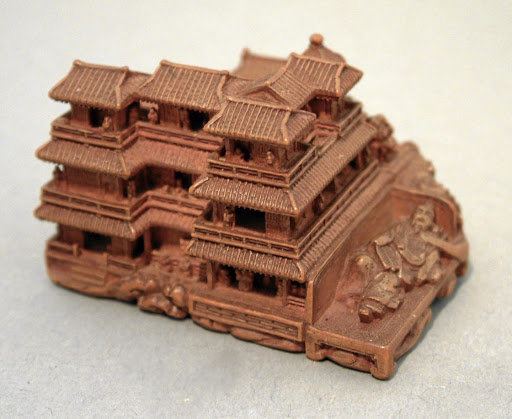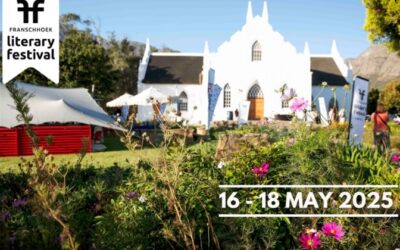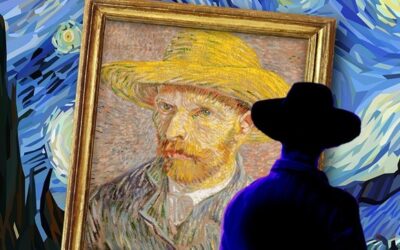Lucinda Jolly provides the history and context of the Isaac Kaplan Netsuke Collection at the South African Jewish Museum. The collection numbers 613 netsuke, of which 100 are on display at the South African Jewish Museum in Cape Town, to which they were bequeathed by his sons on his death.
This article by Lucinda Jolly first appeared in the Business Day.
100th anniversary of the South Africa-Japan bilateral relationship
This year commemorates the 100th anniversary of the South Africa-Japan bilateral relationship. Like all relationships whether economic, political or personal, it’s gone through its dark nights, stagnant times and sunny periods.
Africa has long been trading with the East. There is archaeological evidence in the form of Ming ceramic shards which indicate that Great Zimbabwe became a centre for trading with a network linking to Kilwa Kisiwani and extending as far as China.
The first Japanese immigrants came to South Africa during Apartheid. Their immigration was an offshoot of Japan’s role as South Africa’s major trading partner. In the 60s, under Prime Minister Hendrik Verwoerd, Japanese living in South Africa were given the title of honorary whites, a highly problematic and in this case expedient title, to ensure trading was kept sweet. Japanese immigrants had no voting rights, although they were luckily exempt from national military conscription. Not surprisingly Japanese immigration declined after apartheid ended.
Interestingly, the year Nelson Mandela was born was the same year that the first official Japanese mission was sent to South Africa.
The apartheid Nationalist government would have had its citizens believe that South African culture looked towards the countries of the Atlantic Ocean. One aspect of this was the Cape Dutch style, in reference to historic Cape Dutch gables which were drawn from those in Holland and later modified by French Huguenots. What was seldom mentioned was that many of the beautiful historic Cape Dutch buildings were in fact the craftsmanship of slaves and artisans from the countries of the Indian Ocean such as Indonesia that the Dutch East India Company, or VOC, traded with.
Indeed, even the styles of furniture such as kists, riempie chairs and ceramics found within these houses were drawn from Asian countries such as India, China and Japan.
Currently, according to Ambassador of Japan to South Africa Shigeyuki Hiroki, “about 140 Japanese companies operate in South Africa alone, contributing to more than 150,000 job opportunities locally”.
The East has always had an allure for the West for its exotic otherness and, possibly, because for centuries these societies were hermitically sealed from the corrupting influence of the Europeans – also known as “hairy barbarians” and “potato ghosts”. In spite of the attraction, the connection between the East and West has often been troubled.
The Portuguese were the first traders with Japan in the 16th century. In the 17th century, during the seclusion period, China and Holland were the only countries allowed to have restricted contact and trade with Japan. In 1621, the Japanese shogun instituted a much stricter policy regarding contact with the Dutch and Portuguese.
From 1600 to 1641, the Dutch could move around Japan freely, benefiting from unlimited contact with the Japanese. Later in 1640, the Japanese confined the Dutch to Deshima, a man-made Japanese island specifically designated to them after the Dutch made a religious faux pas.
The pleasure of global exposure to all things Japanese came at a tremendous cost to Japan. Against the background of thriving European economies, the shogunate, which kept Japan sealed, began to crumble. In 1853, after 220 years of restrictions, trade was forcibly opened by the Americans when Commodore Matthew Calbraith Perry landed in Edo Bay with a military fleet. Japan was then forced to sign trade agreements with Western nations.
A year later, trading ports were accessible to the US and selected European countries. Thirty-two years later in 1867, the Parisian public saw their first formal exhibition of Japanese art at the World Fair, when the country displayed a national pavilion and the romance for all things Japanese, or “Japonisme”, bloomed.
In particular, ukiyo-e or “pictures of the floating world”, which influenced artists including Degas, Monet, Van Gogh, Cassatt, Toulouse-Lautrec, Pissarro, Seurat, Gauguin and Renoir, as well as the art nouveau sect. Western artists and collectors exposed to Japonisme were particularly fascinated with the wood cuts. The recognition of the two-dimensional surface as flat, the use of strong outlines and of line rather than colour to suggest perspective, and restriction of colour palette distinguished them from Western image making.
The influence was not restricted to formal elements but included the narrative or subject matter as well.
Western artists didn’t emulate the Japanese style, but rather used its elements for their own ends. Artists were also known to collect prints. For example, the impressionist painter Monet owned 250 Japanese prints.
The debt to Asia, and to Africa, in terms of its influence on Western art, is huge. The list of Western artists, from Van Gogh to Vuillard, in which each artist is influenced by an aspect of Japanese art ranging from sketches to strong outlines is long and varied.
The Hare With the Amber Eyes by Edmund de Waal and the revival of interest in Netsuke
Then, as often is the case with fascinations, after gathering and catching the imagination they peak and ebb.
For the first half of the 20th century, Japanese people forgot what netsuke were as their function had receded with the wearing of Western clothing .
In 2010, ceramicist Edmund de Waal, considered the most famous potter in Britain today, published a best-selling book titled, The Hare with the Amber Eyes. It is a memoir which traces De Waal’s descendants, the Ephrussi, a once wealthy European Jewish banking dynasty, who were centred in Odessa, Vienna and Paris. One of them was his art collecting Uncle Iggy from whom De Waal inherits a collection of 264 netsuke.
Until the publication of this book, very few people had heard of a netsuke or, if they had heard the term, would have known exactly what it is, let alone know how to pronounce it: net-skay.
What exactly is a netsuke? To the uninformed it looks like an intricately carved small sculpture. It is meditative to look at and pleasing to hold in the palm of the hand. When I first bought a plastic version of a curled dragon from a local Chinese import shop, I had no idea I was purchasing a low-end netsuke. Nor had I any idea that a little figurine that lived on a friend’s Victorian marble fireplace mantel was also a netsuke.
In a nutshell, a netsuke is a carved toggle. On a practical level, its purpose is as a fastener to attach tobacco cases or bags to the obi or sash, worn with a mans kimono.
Yet it was so much more than a utility item. Japanese society in the late 17th century, when netsuke emerged, was hierarchical and restrictive. Traditionally, the Japanese merchant class were only allowed to wear plain kimonos. Sumptuary laws introduced by the 17th century Tokugawa Shogunate meant that no one could flaunt their wealth other than the samurai. This law carried the death penalty. To compensate, the netsuke became works of art worn not just for style but to reflect the status of the wearer – the equivalent of high-end 21st century bling. It is alleged that in the 19th century, a master carver sold a netsuke for the price of a house.
The birth of netsuke begins in China with Chinese refugees fleeing at the end of the Ming dynasty. They took their carvings, including ivory figurines of their gods influenced by Christian missionaries, religious statues, medicine figures and silk measuring seals to the safety of Nagasaki. It is suggested that these objects became the template for netsuke or were adapted into them.
The word netsuke can be broken down into the Japanese for “root” (ne) and “to fasten” (tsuke). The name comes from the earliest form of netsuke, which was fashioned from fragments of root wood. Shells, driftwood fragments and stag horns were also used.
Examine a true netsuke and you will see that it has two small holes which are used to attach it to a bag’s cord. The absence of holes means it’s not a real netsuke. A true netsuke is also rounded and without protrusions so as not to scratch the kimono or sash. Like a Haiku poem, it should contain an element of surprise. Animals and humans were the most popular subject matter and the narrative covers gods, myths and legends, and nature.
Netsukes are classified according to shape. Although most were carved from wood, such as boxwood which was preferred for its fine grain, ease in staining and carving and slow-wearing qualities, ebony, ivory, bone, ceramic and even hippo and whale teeth have been used.
Netsuke wearers were often very conscious in a competitive way of what the other was wearing. The wealthy were able to afford many different netsukes for everyday wear. Those who considered themselves cultured or restrained would wear toggles with poetry written on them. The more risqué gents sometimes displayed sexually suggestive imagery. Netsukes were also governed by cultural mores. To wear a netsuke of a rabbit on New Year’s Day, when the animal sign was in fact a monkey, would have been regarded as a fashion gaffe.
Famous historic Western netsuke collectors include jewellers Louis Cartier and Carl Fabergé. Prolific collectors are found in Germany, France, the Netherlands, Spain, Switzerland, Britain and the US.
In 2011, a year after The Hare with the Amber Eyes was published, an ivory lion dog or shishi was sold at Bonham’s in London for GBP 250,000. High-quality netsuke are valued at between GBP 4,000 and GBP 40,000.
Isaac Kaplan Netsuke Collection
So, what is the connection between a South African Jewish businessman born in the beginning of the 20th century and the netsuke? The late Isaac Kaplan owned one of the most comprehensive private collections in the world. The collection numbers 613 netsuke, of which 100 are on display at the South African Jewish Museum in Cape Town, to which they were bequeathed by his sons on his death.
Kaplan started collecting netsukes in the mid-50s.
He was first introduced to a collection of Japanese figurines through a friend’s brother who had worked in Japan. Eventually Kaplan bought the collection, issuing in his lifelong passion for the toggles. His son writes how Kaplan would come back from work and immediately engage with his collection.
It’s also understandable that Kaplan was simply drawn to the world of netsuke. For a boy who spent time in an orphanage, netsuke may have provided an intimate yet controllable world, one that was safe, contained and ordered, and yet contained elements of the magical and whimsical.
Although Kaplan taught himself to write Japanese, he never visited Japan. The reason given by his son, Mendel Kaplan, was that Kaplan lived in 18th and 19th century Japan in his imagination. There was the risk that 20th century Japan could have destroyed his carefully constructed world.
The Isaac Kaplan Netsuke Collection at the South African Jewish Museum is displayed in specially designed wooden cabinets which can be viewed through glass fronts. It’s in close proximity to Kaplan’s collection of Japanese swords, pipes, metal work, tobacco pouches and bags. Carved to be viewed from 365 degrees, the desire to hold, examine and even possess the toggles is strong. But it’s a thwarted one as viewers are forbidden to handle them. Instead, further examination though the lens of a magnifying glass allows the incredible detail to be enjoyed.
The collection is broken down into manageable categories: the early collection; the South African artist Gregoire Boonzaaier’s collection; individual gifts; the collection of lucky gods, legendary and mythical characters and heroes; everyday life; flora and fauna; mythical beasts and devils; and unusual netsuke.
Each of the 100 pieces in this display is fascinating in its own right, and dependent on one’s own resonance.
For example, Roseis Dream from the Edo period. It’s a netsuke of a grand palace complete with minute people inside and a dreaming beggar lying on its outskirts. Or the ivory Dried Fish, also from the Edo period, of a dried, dead salmon fish, symbolic of good health.
The highlight for me is the ivory carving of a deer baying at the moon. The deer is much loved in Japan and is a companion to Jurojin, the God of longevity. One of only five or six in the world, it is rare because the deer is shown seated – an unusual position for a deer.
While 2018- marking the 100 year connection between Japan and South African will end- the permanent Isaac Kaplan netsuke collection will continue to remind us of our connection with Japan by bringing visual delight and pleasure to all who see them.
WHERE: The Isaac Kaplan Netsuke Collection at The South African Jewish Museum, 88 Hatfield Street, Gardens, Cape Town 8001
TOURS: Tours of the collection are available with Malibongwe Makapela, an informative and enthusiastic guide . Contact 021 465 1546.
The South African Jewish Museum is featured on The Map to Jewish Cape Town






